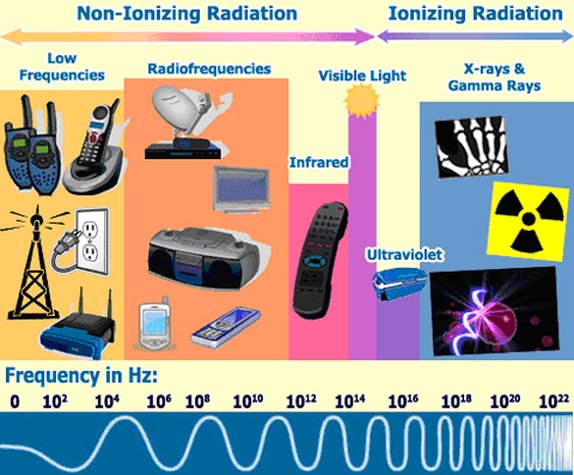Gamma rays, a form of electromagnetic radiation with wavelengths shorter than those of X-rays, are generated by some of the most energetic and enigmatic phenomena in the universe. While human-made sources of gamma radiation often draw attention due to their applications in medicine and industry, it is imperative to acknowledge the myriad of natural sources that contribute to the gamma-ray background we experience on Earth. This discourse delves into several natural origins of gamma rays, illustrating both their significance in the broader context of astrophysical phenomena and their implications for environmental science.
One of the preeminent natural sources of gamma rays is celestial bodies, particularly those involved in nuclear processes. Stars are prime examples; during their lifecycle, especially in their supernova phase, they undergo cataclysmic reactions, resulting in the emission of gamma radiation. For instance, when massive stars exhaust their nuclear fuel, they collapse under their own gravitational pull, leading to a supernova explosion. This event also generates gamma-ray bursts (GRBs), which are some of the most luminous events in the universe. The sheer energy output of these bursts, often linked to massive stars and neutron stars merging, captivates astronomers and physicists alike, as the intensity of a single GRB can outshine entire galaxies.
Beyond stellar events, cosmic rays—high-energy particles originating from outer space—collide with atomic nuclei in the Earth’s atmosphere. The interaction between these cosmic rays and atmospheric constituents leads to cascades of secondary particles, including gamma rays. These photons, while coming from extraterrestrial origins, celebrate the dynamic interactions of high-energy cosmic phenomena with terrestrial matter. This interplay generates a rich tapestry of gamma radiation, contributing to the gamma radiation that scientists detect and study.
Planetary phenomena also play a role in the natural production of gamma rays. The presence of certain isotopes within the Earth’s crust, such as uranium and thorium, leads to natural radioactive decay, emitting gamma radiation in the process. This decay occurs over unimaginably long time scales and reflects the intricate geochemical processes that sustain our planet’s dynamism. The gamma radiation produced from these isotopes is of crucial importance in geology and environmental science, as it assists researchers in understanding the age and evolution of geological formations through radiometric dating techniques.
Furthermore, certain terrestrial environments, particularly those rich in radioactive materials or minerals, can be hotspots of gamma-ray production. For instance, regions characterized by high levels of radon gas—a byproduct of uranium decay—exhibit enhanced gamma radiation levels. Such occurrences necessitate understanding the health implications of radon exposure, particularly in residential areas built upon geologically rich substrates. The ability to monitor and mitigate exposure to gamma rays in these contexts is vital to public health, showcasing the duality of gamma radiation as both a natural phenomenon and a potential hazard.
Biological systems can also give rise to gamma rays, albeit indirectly. Some ecosystems, particularly those found in high-radiation environments, harbor organisms that have adapted to withstand elevated levels of radiation. These organisms, known as extremophiles, often demonstrate unique biological processes that warrant extensive study. Their resilience raises tantalizing questions about the potential for life in extreme environments beyond Earth, particularly in the context of astrobiology and the search for extraterrestrial life.
The atmospheric phenomenon called lightning is another intriguing and natural source of gamma rays. While it may seem counterintuitive for a seemingly terrestrial event to contribute to cosmic radiation, studies have demonstrated that lightning can produce terrestrial gamma-ray flashes (TGFs). These intense bursts of gamma rays can occur during electrical discharges and are thought to be generated through the acceleration of electrons in strong electric fields, producing brief but intense emissions. Such occurrences challenge our conventional understanding of gamma sources and invite further inquiry into the relationship between atmospheric dynamics and high-energy physics.
Gamma-ray detection technologies, such as scintillation counters and gamma-ray spectrometers, have enabled scientists to capture and analyze these elusive emissions. The exploration of cosmic and terrestrial gamma-ray sources has profound implications not just for fundamental physics but also for applied sciences. For example, understanding gamma radiation assists in monitoring nuclear activities and can offer insights into climate patterns and geological processes.
The fascination surrounding natural sources of gamma rays lies not solely in their scientific significance, but also in their capacity to inspire awe about the universe’s complexities. Each source, from the farthest galaxies to the Earth beneath our feet, embodies a unique narrative of energy transformation and interaction—an embodiment of nature’s grandeur. As researchers continue to uncover the mysteries of these gamma emissions, they contribute to a paradigm where understanding the cosmos becomes intertwined with comprehending our terrestrial existence. The vastness of possibilities is staggering, propelling the academic community to explore, theorize, and innovate in the heart of this extraordinary and ever-expanding field.
In conclusion, natural sources of gamma rays enrich knowledge across multiple disciplines, from astrophysics to environmental science, illustrating the interconnectedness of cosmic phenomena and terrestrial processes. The study of gamma radiation exemplifies how looking to the skies and beneath our feet can reveal the intricate layers of reality, fostering a deeper appreciation for the universe we inhabit.












